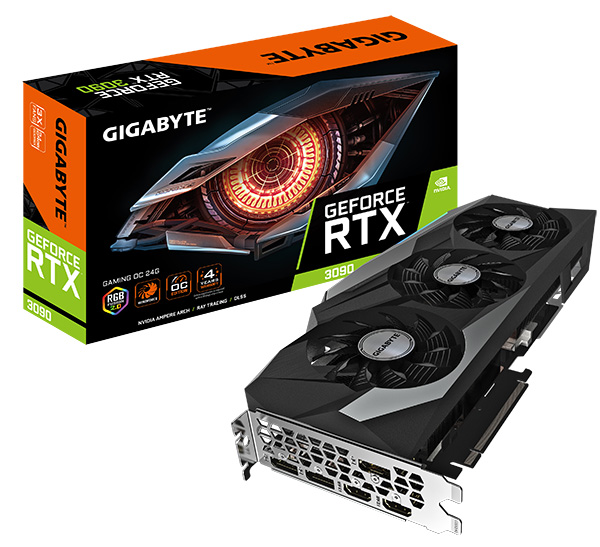Conclusion
...given its characteristics, this card ought to be called the RTX Titan or GeForce RTX Studio...The GeForce RTX 3090 rolls into town and takes the mantle of world's fastest gaming graphics card away from the RTX 3080. Using a fuller implementation of the GA102 Ampere die offers more of everything - shading performance, memory bandwidth and framebuffer size - and the results are predictable as it storms to the top of the 4K charts.
So far, so good. Yet the performance lead over a decent RTX 3080 at 4K averages less than 10 percent. Such a figure is at odds with the muscular architecture, but the devil is in the details. Having to run a fuller chip with only 30W more board power leads to core boost frequencies that are lower than RTX 3080, largely negating the on-paper TFLOPS advantage, while faster memory isn't the boon it is on lower-power cards.
This commentary puts the RTX 3090 into a difficult spot. It's 10 percent faster for gaming yet costs over twice as much as the RTX 3080. Value for money is poor when examined from a gaming point of view. Part of that huge cost rests with the 24GB of GDDR6X memory that has limited real-world benefit in games. Rather, it's more useful in professional rendering as the larger pool can speed-up time to completion massively.
And here's the rub. Given its characteristics, this card ought to be called the RTX Titan or GeForce RTX Studio and positioned more diligently for the creator/professional community where computational power and large VRAM go hand in hand. The real RTX 3090, meanwhile, gaming focussed first and foremost, ought to arrive with 12GB of memory and a $999 price point, thereby offering a compelling upgrade without resorting to Titan-esque pricing. Yet all that said, the insatiable appetite and apparent deep pockets of enthusiasts will mean Nvidia sells out of these $1,500 boards today: demand far outstrips supply. And does it matter what it's called, how much memory it has, or even what price it is? Not in the big scheme of things because there is a market for it.
Being part of the GeForce RTX firmament has opened up the way for add-in card partners to produce their own boards. The Gigabyte Gaming OC does most things right. It's built well and looks good, and duly tops all the important gaming charts at 4K. We'd encourage a lower noise profile through a relaxation of temps, but if you have the means by which to buy graphics performance hegemony, the Gaming OC isn't a bad shout... if you can find it in stock.
Restrained RGB
Four-year warranty
Solid build quality
Overclocked on the core
Stock availability is poor
24GB makes little sense for gamers
Noisier than we'd like
Gigabyte GeForce RTX 3090 Gaming OC
HEXUS.where2buy*
The Gigabyte GeForce RTX 3090 Gaming OC is available to purchase from Scan Computers.
HEXUS.right2reply
At HEXUS, we invite the companies whose products we test to comment on our articles. If any company representatives for the products reviewed choose to respond, we'll publish their commentary here verbatim.
*UK-based HEXUS community members are eligible for free delivery and priority customer service through the SCAN.care@HEXUS forum.















